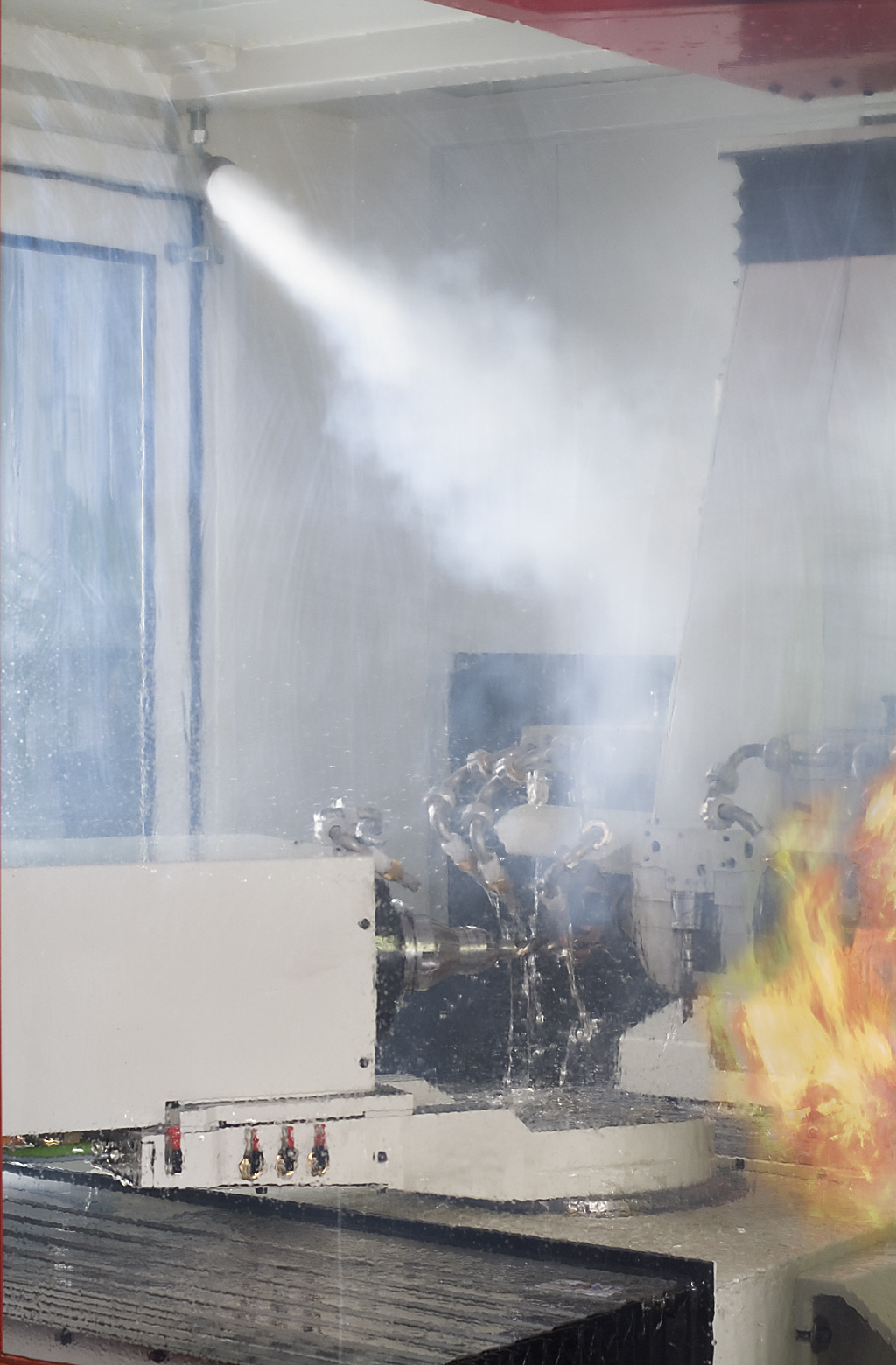Kraft & Bauer Technical Overview
Rapid Detection, Immediate Suppression, Maximum Safety
Watch Our System In Action
A test run demonstrating the effectiveness of Kraft & Bauer in preventing machine damage.
- Customised Detection – Our UV/IR sensors can be calibrated to react to fire in a time tailored to your production.
- Full Suppression – Watch CO₂ extinguish flames without damaging the machine.
- Automatic Shutdown – Demonstrates seamless machine emergency stop during activation.
Advanced Fire Detection Technology
Kraft & Bauer’s fire suppression systems are engineered to detect and respond to fires at their earliest stages, preventing catastrophic incidents. Our specialised detection technology includes:
-
Ultra Violet (UV) Flame Detectors – Reacts within 1 second to UV radiation from flames.
-
Infra-red (IR) Flame Detectors – Detects the infra-red signature of fire.
-
Heat Sensors (70°C/90°C) – Triggers when abnormal heat levels are detected.
-
Microprocessor-Controlled Control Unit – Analyses fire detection data and initiates suppression.
-
Optical & Acoustic Alarm System – Alerts personnel to fire hazards.
-
Manual Emergency Release – Allows immediate manual activation.
Intelligent Microprocessor-Controlled Extinguishing System
Kraft & Bauer’s IP55-rated fire suppression control units (FB713/FB714) are designed for industrial environments and machine tool protection. These systems offer continuous monitoring with visual and audible alerts for power status, operational state, and backup battery function.
-
Automatic & Manual Activation – Suppresses fires autonomously or via manual override.
-
Integrated Emergency Power Supply – Ensures functionality even during power outages.
-
Extinguishing Delay Function – Enables controlled release timing.
-
Real-Time System Status Alerts – Immediate warnings for potential faults or fire events.
CO2 & Argon Gas Suppression: Safe & Effective
Kraft & Bauer utilises CO2 (Carbon Dioxide) or Argon gas for effective fire suppression. These inert gases are non-toxic, residue-free, and non-corrosive, ensuring no damage to machine components or coolants.
Key Features of Our Gas Suppression Systems:
-
Electromagnetic Valve Release – TÜV-certified for safety and reliability.
-
Custom Gas Volume Options – CO2 (5kg-50kg), Argon (10L-50L) to fit different machine sizes.
-
High-Pressure Distribution – Ensures fast and efficient fire suppression.
-
No Residue or Contamination – Keeps machines and workspaces clean and intact.


Automatic Machine Shutdown & Fire Containment
Once activated, the system releases CO2 or Argon gas through precision-engineered nozzles, displacing atmospheric oxygen and stopping combustion. Simultaneously, the machine tool is automatically shut down to prevent further damage or re-ignition.
Quick System Reset & Minimal Downtime
Post-fire recovery is seamless with Kraft & Bauer’s efficient system reset capabilities:
-
Simple Gas Cylinder Replacement – Easy and fast swap of empty bottles.
-
Minimised Production Disruptions – Immediate reset reduces operational downtime.
-
Engineer Training & Certification – We provide expert training for in-house teams to perform system resets.
24/7 Protection & Industry Compliance
Kraft & Bauer’s fire suppression systems provide round-the-clock automated protection, ensuring continuous safety for unmanned machine operations. Our solutions meet stringent industry regulations, including:
-
DIN 14497 & EN Standards
-
BGR 134 Professional Safety Regulations
-
CE Certification for European Compliance
-
UK Fire Safety Legislation Requirements
